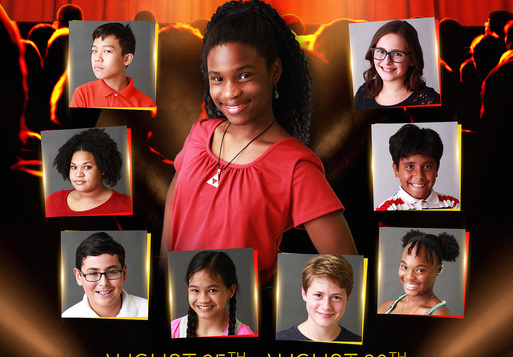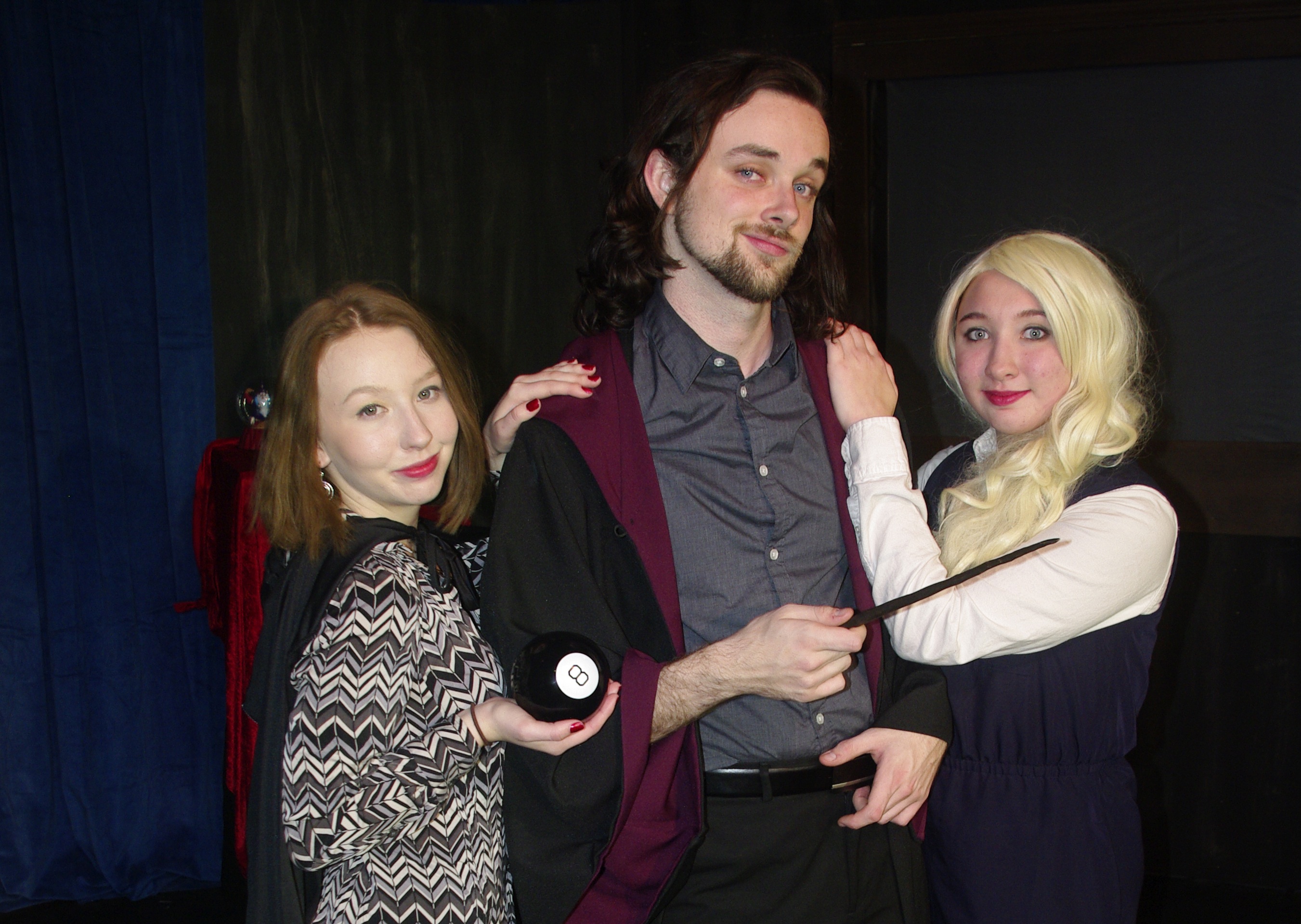Noted Actor/Writer/Director to Perform Saturday at The Museum of The American Printing House for the Blind
By Kathi E. B. Ellis
Entire contents copyright © 2014 by Kathi E. B. Ellis. All rights reserved.
In recent years the American Printing House for the Blind Museum has been quietly developing a commitment to theatre and performance with two programs, Braille Readers Theatre and Bards and Storytellers. The Readers Theatre program has performed The Miracle Worker, Much Ado About Nothing, and The Curious Savage; the 2015 spring reading will feature new plays written by playwrights who are blind or visually impaired. Bards and Storytellers are designed to celebrate the tradition of entertainers with vision loss.
On September 13, NY-based Leona Godin will be in Louisville as part of the Bards and Storytellers program. She is part of an almost decade-long commitment to this program with a wide array of guest artists including Louisville’s Patrick Hughes and Terri Gibb. Katie Carpenter, who coordinates these programs, says she was doing some online research when she found Leona Godin, and was captivated by videos of her performance pieces that tell the stories of historical figures that were blind.
Ms. Godin will be reading one of her monologues from The Spectator and The Blind Man, talking about her one-woman show about Helen Keller, and engaging in a Q&A with Michael Hudson, Director of APH Museum. Godin is a playwright who is blind; she began losing her sight in her teens as a result of a degenerative disease and became completely blind by the time she was thirty. She says that she had some interest in theatre as a child, but with that came traditional ideas of how to pursue it – ideas that did not include a performer who was blind. Thus, Ms. Godin went to school for literature. Her current engagement with theatre has grown out of her genuine interest in research, but “but not as an academic. I take a morsel and spin it out as an artist.”
Ms. Godin blends her academic interest in the Enlightenment with a love of theatre and from this creates performance pieces that explore the metaphorical and literal senses of blindness. She cites the Enlightenment as a time when leading thinkers were looking for ‘lightness’ and clarity, ideas that can be explored in a theatrical space. A specific example, for her, is the story of how Valentin Haüy, a Frenchman who knew leading thinkers of the Enlightenment, had the idea to educate the blind. On a Paris street Haüy comes across a spectacle: twelve blind men in comedic costumes wearing Asses ears, singing bawdy songs. He is horrified both by this performance and by the fact that the gathered crowd is having a grand time. This moment leads him to begin plans to open a school for the blind, a dream that takes ten years; he becomes the first person to create embossed letters as a reading aid. A story that made it into Ms. Godin’s The Spectator and the Blind Man.
Ms. Godin sounds almost giddy about the role current technology has had in opening up the world for people who are blind. We’ve come a long way from those first embossed letters in the late 18th century. Losing her sight progressively, says Ms. Godin, meant that she held onto the printed word for longer than maybe she should have. While she was not proficient with Braille early on, she is now concedes that she is still a slow reader with the tactile writing system. While she was at graduate school, she faced variable accommodations in terms of professors and equipment – though advances in technology during that time were significant. Now mainstream gadgets permit people who are blind to participate much more fully than ever before, the iPhone is a great example of this. Ms. Godin is excited that much of OCR and speech recognition software comes out of disability technology, and is quick to acknowledge that the reverse is also true. As a researcher she says all this technology is the “most amazing thing ever, it’s hard to explain how easy it is [for people who are blind] to have access to electronic books now. Research is much easier now.”
We talked about the importance of casting in theatre and movies, hiring performers who reflect the disabilities that their characters have. Ms. Godin’s experience doing a commercial for Vanda Pharmaceuticals about a drug that is designed specifically to help people who are blind adapt their circadian rhythms as they cannot receive light, has revealed this issue to her, allowing her to meet performers who are blind, and an LA agent who specializes in getting roles for performers with disabilities. A 180-degree turn for her, after she cast sighted actors in The Spectator and the Blind Man, and asked them to wear darkened spectacles for rehearsals and performances. Both experiences led to her current thinking that she would love to give first choice to actors who are blind – and they need to be right for the role. She would be willing to use sighted actors for blind characters if they were the best actor for the role.
Ms. Godin has a one-woman show, The Star of Happiness, which explores Helen Keller’s story. Ms. Godin’s inspiration for this three act, idiosyncratic performance piece was one sentence in The Radical Life of Helen Keller, that for four years she performed on the vaudeville stage. Most people know the Helen Keller that comes to us through the play and movie The Miracle Worker based on Ms. Keller’s own writings, The Story of My Life; few are aware of her book about her adult life, In Midstream, that went out of print almost immediately. Affirming stories of children overcoming adversity are much more marketable than the travails of adult life. Ms. Godin’s three-act play begins with the iconic ‘water’ scene with which many will be familiar. Act two morphs into a tongue-in-cheek approach Helen Keller’s life in vaudeville, derived from the question and answer sessions that Ms. Keller and Ms. Sullivan conducted with their audiences. Act three moves into Ms. Godin’s experiences as a performer.
This piece has been performed twice, and reminds Ms. Godin that she doesn’t have performance training; that while she loved creating and rehearsing it, she would love to work with a trained actress who is blind to recreate this play. A propos of our earlier conversation, casting a future production would raise the question of whether the actor should be deaf as well as blind – an interesting consideration as Ms. Keller always self identified as blind rather than blind and deaf in her public appearances – something that causes Ms. Godin to muse on the meta aspects of the show if Helen Keller were to be played by two actresses, one blind and one deaf.
Clearly someone who is not afraid to embrace large ideas, Ms. Godin is already embarked upon her first novel – which will explore many of these ideas – and will be ready to take up any of these ideas in her appearance on Saturday, May 13, 2014 at the American Printing House for the Blind Museum.
Bards and Storytellers
Celebrating the historic tradition of entertainers with vision loss
Saturday, September 13, 2014 – 10:30am
Museum of the American Printing House for the Blind
1839 Frankfort Avenue
Louisville, KY 40206
Admission is free but reservations are required.
Email kcarpenter@aph.org or call 899-2213
 [box_light]Kathi E.B. Ellis is a member of the Lincoln Center and Chicago Directors’ Labs and an associate member of the Stage Directors & Choreographers Society. She has attended the LaMama Directing Symposium in Umbria, Italy, and is featured in Southern Artisty, an online registry of outstanding Southern Artists. Her directing work has been recognized with nominations for the South Florida Theatre Carbonell Award. Locally, Kathi is a member of Looking for Lilith Theatre Company, a founding principal of StageLab theatre training studio, and is part of ShoeString Productions an informal producing collective. She has written book reviews and articles for Southern Theatre, the quarterly publication of the Southeastern Theatre Conference, and was a contributing writer for JCPS’ textbook for the 11th grade Arts and Humanities survey course and for YouthArts Tapestry, a Kentucky Arts Council publication.[/box_light]
[box_light]Kathi E.B. Ellis is a member of the Lincoln Center and Chicago Directors’ Labs and an associate member of the Stage Directors & Choreographers Society. She has attended the LaMama Directing Symposium in Umbria, Italy, and is featured in Southern Artisty, an online registry of outstanding Southern Artists. Her directing work has been recognized with nominations for the South Florida Theatre Carbonell Award. Locally, Kathi is a member of Looking for Lilith Theatre Company, a founding principal of StageLab theatre training studio, and is part of ShoeString Productions an informal producing collective. She has written book reviews and articles for Southern Theatre, the quarterly publication of the Southeastern Theatre Conference, and was a contributing writer for JCPS’ textbook for the 11th grade Arts and Humanities survey course and for YouthArts Tapestry, a Kentucky Arts Council publication.[/box_light]





